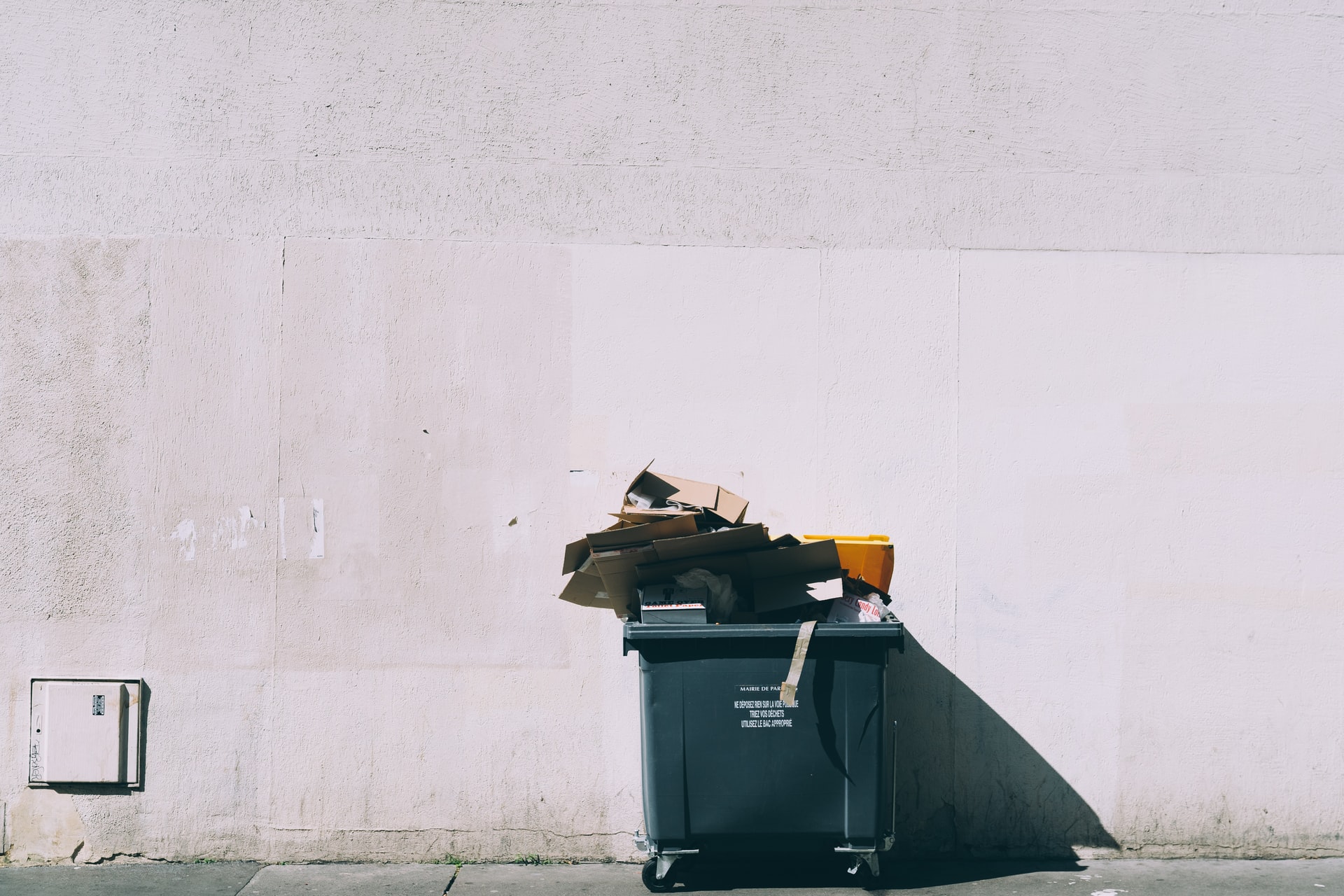
| ~Welcome~ |

Quite possibly one of the most difficult tasks in moving is deciding what to take with you and what to part with. Putting the beloved sweater you haven’t worn in five years in the “give-away” pile can be a little heart-wrenching. But, when it’s all said and done, most people find that parting with some stored “treasures” can make moving a much more enjoyable experience, not to mention that it can be a big money saver!
The Two-Year Rule
If you haven’t used it—or even seen it—in two years or more, it’s time to let it go. This especially applies to things hanging in closets or inside dresser drawers. There will always be things you just can’t part with, even if you haven’t used it recently. Who doesn’t have sentimental things stored in plastic totes in the garage? But, that’s not the stuff we’re talking about. If it’s clutter, no longer fits, or is way out of style, send it on over to the sell, toss or donate pile.
Determine Whether It’s Worth Moving
Of course, determining value is a little subjective. The t-shirt my husband wore in high school (and still occasionally wears 20 years later) means a lot more to him than me. Likewise, the jeans I wore at 18, still hanging in my closet with a prayer that they’ll fit again someday, mean more to me than him. Reality is, it’s time to move them both out. As you begin the packing process, question what’s truly priceless to you (sentimentally and monetarily). This is especially helpful when you’re talking about larger items like furniture and appliances. Would you be better off replacing it at your destination or moving it?
Don’t Move What You Won’t Use
Bottom line: If you won’t have a place for it at your new location or you just won’t use it, rather than selling it when you get there, save money by getting rid of it before you move. For example, if you have lawn furniture and lawn equipment at your current residence, but are moving into a condominium with a landscaping crew, sell it all pre-move.
Turn Your Trash into Cash
Now that you’ve decided what can stay and what can go, get rid of it the right way. If it’s something no one else can use, trash or recycle it. But, if it’s good quality, sell or donate it. Garage sales can be a huge success, and are a great way to make a little extra money to pay for incidentals as you travel to your new home. If you don’t have the time (or patience) for a garage sale, consider donating your unwanted items to a local charity. Some will come to your home to pick up the items—just be sure to request a tax receipt! Some well-known charities you may find in your area are: Goodwill, Salvation Army and Vietnam Veterans of America.
Are you looking for a more portable, residential friendly solution for your home or business to dispose of your waste quickly without restrictions of a dumpster? Click here for more information.

Each step of the moving process has some paperwork that goes along with it. It's important to fill out all of the appropriate forms as you go along and just as important to keep copies of that paperwork with you during your move. You'll want to be prepared should you encounter any questions about insurance, inventory, estimates, etc. The following is a list of the paperwork that you are likely to encounter while relocating.
The bill of lading is a document that is issued to you from the carrier you select to ship your belongings. It is a contract that acknowledges that the carrier received goods from a cosigner for transport to a prearranged location. It is used as evidence that such a contract exists and, therefore, holds the carrier accountable for the safe transport of the cargo.
This is the short-term insurance that you purchase to cover any damage that may be done to your belongings while being moved from your old home to your new one. If anything happens to your goods during the move, you'll want to have copies of this paperwork, so that you have proof of the agreed upon coverage.
An inventory list documents all of the belongings that your mover will be transporting for you during your move. You should list each item that is in every box as well as the condition that it is in. You and your moving company should both sign the inventory list. Hold on to a copy, so you can be sure that all of your goods made it safely to your new home.
Your mover will provide you with estimates regarding the cost of your move before they actually relocate your belongings. Always have a copy of the estimate and the terms of the estimate on you, so you can be prepared to deal with any unexpected changes in cost that the moving company may try to apply mid-move.
The following are lists of some of the other paperwork you'll want to keep copies of during the moving process. The first list contains the items that you'll need to gather before the relocation takes place, and the second list is what you'll need to make copies of after the relocation takes place.
Prior to your move, collect copies of all paperwork that applies to the following:
• Bank account transfers
• Life insurance
• Home insurance
• Auto insurance
• Medical records
• School records
• Prescriptions
• Veterinary records
• Utility cancellation
• Closure or transfer of any other accounts or memberships
• Passports and visas for international moves
After your move, make copies of all paperwork that applies to the following:
• Activation of utilities
• Activation of any other services (pool maintenance, snow removal service, lawn care service, etc.)
• Activation of any memberships or accounts
Creating and following a paper trail for your relocation will allow you to keep track of every part of your move, pinpoint errors in the moving process, settle any disputes that arise, and, therefore, help ensure your move goes smoothly.
Check Dumpster Wagon for more information.

Moving can be an expensive proposition, especially if you’ve been in your house a while. So unless someone else is paying for your move, chances are you will need to lower your moving costs yourself. Fortunately, the costs of moving a house can actually be significantly reduced by following these tips:
Reduce the Load One of the best methods for achieving inexpensive moving costs is to get rid of things you don’t need. You can begin reducing your moving costs by having a garage sale or listing items for sale in your local paper. You should also look for items you can give to friends, recycle or donate. There are plenty of charities that will pick up your donated items and most cities offer recycling programs for electronic and other items. Once you’ve found everything you can sell, donate, give to friends or recycle, it’s time to start throwing things away. Be ruthless! And remember that in some cases it can be less expensive to replace an object at your destination than to move it.
Get Multiple Estimates If you’re going to use a moving service, get at least three estimates. But when you do, be aware that the lowest price doesn’t necessarily indicate that you’ll be able to reduce the costs of moving a house, because there are other factors in play. Once you’ve identified a few candidates, check their references to see if they would use the service again and also call the Better Business Bureau or your state’s attorney general’s office to see if there have been any complaints. What starts as a bargain can quickly become an expensive nightmare if there are hidden charges or if the company is running a scam, so a little research can make all the difference.
Move Mid-month If you’re hiring a moving company or renting a truck, it will be easier to achieve inexpensive moving costs if you move in the middle of the month. That’s because most leases begin on the first or last day of the month, so there’s tremendous demand for services at those times. Many moving or rental companies offer less expensive rates at off-peak times, so a mid-month move can save you money.
Disassemble Furniture and Other Large Items Yourself It stands to reason that your moving costs will be a whole lot less if the movers don’t have to disassemble beds, entertainment centers, swing sets and other similar items. These should have all their pieces fastened together after they’re deconstructed, so you can easily find what goes where at the new location.
Provide Good Directions If you’re moving over a long distance and the moving van driver isn’t familiar with the territory, make sure you provide good directions and a map. If the driver gets lost, there’s a very real possibility the costs of moving a house will go up because you’ll have to pay for the extra time it takes for him to find you.
Looking for more flexible, convenient and safe transportation for your household goods at affordable prices? Visit Dumpster Wagon.
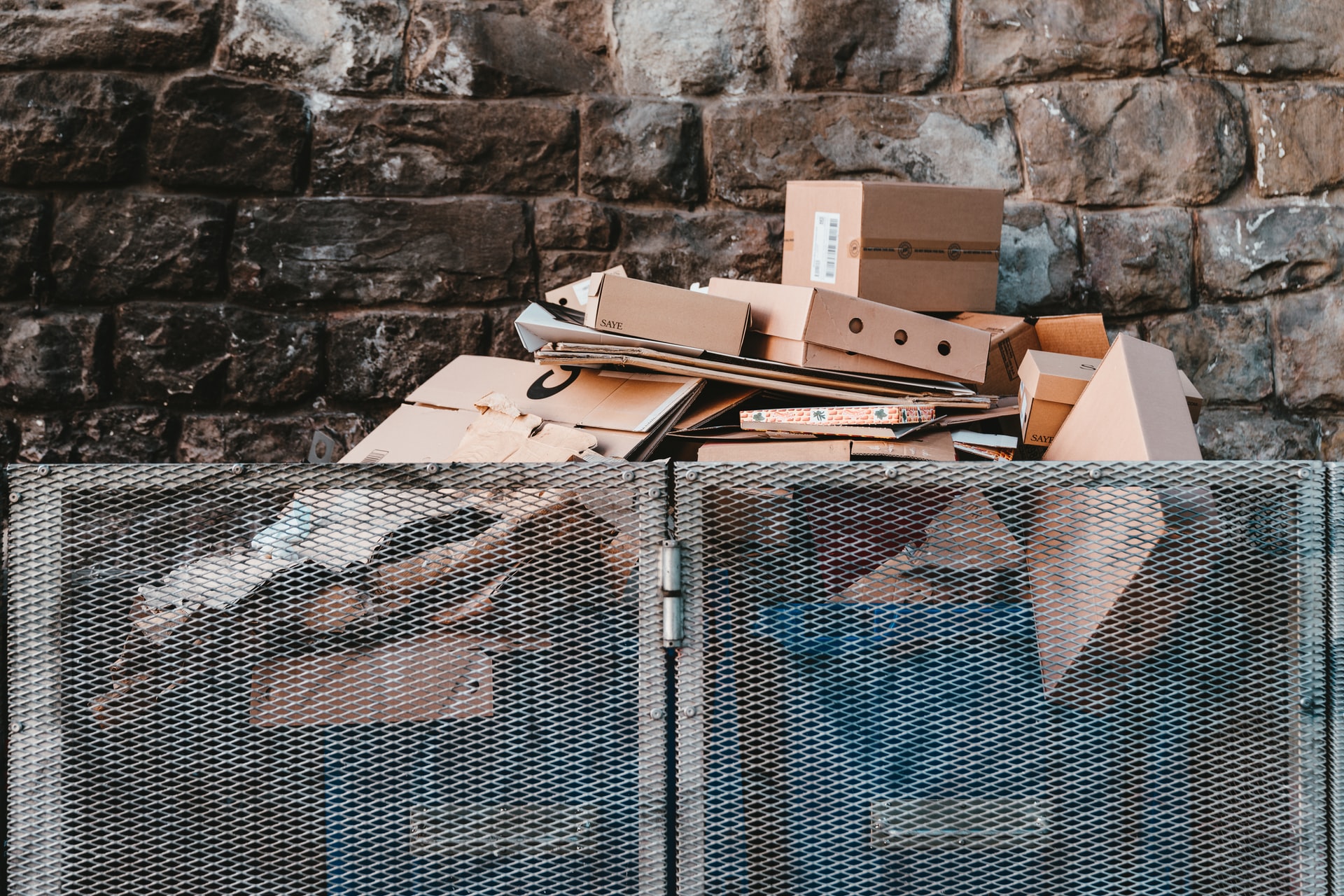
Reusing packing materials after your move is a great way to care for the environment. If you get a little creative, there are many different ways to recycle them in a green manner.
One of the most versatile of packing materials is the cardboard box. Consider the following ideas for reusing cardboard boxes and packing paper:
• Kindling - Tear up cardboard and packing paper to make dry kindling for fires. You can even roll the cardboard around large logs to help start them. To put out a campfire, soak some cardboard in water and throw it on the glowing embers. It will help stifle the fire and put it out without drowning the fire site. The next day, the cardboard should be dry and ready to act as kindling.
• Garden borders - Use the cardboard as a border for garden beds and paths. You can even cut it to fit a desired shape--perhaps some sloping curves or jagged right-angles. Since it will probably fall apart in the rain, make sure to have a template for making replacements.
• Soil enrichment - If your cardboard and packing papers are unbleached and unprinted, you can integrate shreds of it into your soil when planting in the spring. The decomposition will bring necessary nutrients to the plants without stacking up in your garage.
• Compost - Instead of waiting until the spring, why not make a cardboard compost pile outside? Use a box lined with bubble wrap to hold torn scraps of moving paper and cardboard along with other organic items (like banana peels, leaves, apple cores, and the like). Keep the box protected from the elements under an overhang. In the spring, simply lift the bubble wrap and spread the contents in your garden. Tear up the containing box and include it in the compost.
• Temporary bird feeder - Fashion a cardboard box into a temporary seasonal bird feeder. Hang it from a tree branch and watch as the birds enjoy some tasty seeds. A bonus: as the cardboard becomes ragged in late summer, many birds and squirrels will gladly rip off pieces and use it to build nests.
• Protect trees - Wrap several pieces of cardboard around trees and secure them with packing tape to protect them from male deer during mating season. They strip bark off trees when marking their territory. The cardboard will deter them from injuring the trees.
• Create wind buffers - For small trees and shrubs, protect them from the harsh winds of winter by creating cardboard wind buffers. Cut out the bottom of a box and place it over the plant, which will keep it protected from the elements. Just make sure it still gets plenty of light!
• Leaf and lawn clippings - Check with your municipality to see if you can place raked leaves and lawn clippings in cardboard boxes or packing paper sacks instead of black plastic bags. The paper is much more biodegradable than black plastic. It will also save the pick-up crew the time it takes to empty plastic bags into the truck, as the entire container can be taken away.
You can also find boxes to reuse instead of buying new ones. Then you can reuse them again after your move or make them available for others to use. Grocery stores and liquor stores usually have durable boxes available for free. You could also check with other local retailers.
Bubble wrap isn't biodegradable so there aren't as many green options as there are for cardboard boxes. Here are a couple of ideas for eco-friendly reuse:
• Do-it-yourself carpeting - Weave strips of popped bubble wrap into a standard loom or carpeting kit. You'll have a great outdoor rug perfect for wiping muddy shoes or for lining the area around a pool.
• Insulation - Use bubble wrap and cardboard to insulate attic windows and drafty air conditioner slots.
• Storage - If you want to pack away toys, seasonal clothing, fine china, etc., you can cushion them, pack them into boxes, and then store them, so they will be well protected until you need them.
• Containers - Cut cardboard into small square pieces and then tape or glue them together to form a small box. Leave the top uncovered and then use the boxes to hold small items like nails, screws, and paper clips.
• Shipping - Leave some boxes aside, so rather than buying new ones, you can use them to send packages.
• Toy - You can use cardboard to make a variety of toys for children. For example, you can cut and stack boxes to fashion a castle or fort. Make sure that any staples and sharp edges are removed so that no one gets hurt.
Recycling is beneficial to both you and the earth. First, you'll be keeping things out of a landfill altogether. Second, you'll actually use these materials to do something beneficial for the planet. It's a great way to eliminate waste while feeling good about yourself!
Check Dumpster Wagon for more information.

When you are thinking about bedrooms there are many different interior design tips for you to use. Take a look at the following and see how you can use these tips in your own bedroom. One of the first things that you may want to think about is to use the same color, design and fabric of the covers on the bed with the drapes on the wall. This will automatically give you a designed look for your room. Along with this tip would be to choose colors and fabrics first, then choose everything else after that.
Another one of the interior design tips for bedrooms would be to use warm, pastel or neutral colors in the bedroom. Bright colors are not conducive to sleep. Here is another tip for you to think about and that is the flooring in the bedroom. Use warm materials like carpet for your flooring. Tile is cold and not pleasant to step onto when you get out of bed in the morning. If you want a darker room, then use a darker wall color and have the curtain a shade or two lighter for best results. This choice of colours should be applied to the choice of your bedroom furniture as well.
For lighting issues, a great idea from interior design tips would be to use up lights, lampshades and pin lights for mood lighting. This, along with a center light will be perfect for your lighting needs. Remember to also invest in good linen or cotton sheets along with a good pillow and mattress. This will also help your sleep as well. If you want fresh air, then put a fan either on the wall farthest from the window or in the ceiling for a good air flow and less energy cost. This is true especially if you use an air conditioning unit.
Mirrors make a room look larger and can be all you need to give you the illusion of space. Also when it comes to wall décor, one of the most popular interior design tips is to go through your child’s artwork, magazines or art books and have a picture framed. This saves on the cost of decorating the walls with pictures and gives you a unique picture to boot. You may also want to consider having extra storage space inside your bedroom to defeat the clutter. Keeping your room clutter free and neat is important. Your bedroom is a very private space.All of these interior design tips will work with any bedroom. The bedroom should be comfortable and be an oasis from the hustle and bustle of every day life. No matter which ones that you choose to use, you will be making your bedroom the ideal place for rest and relaxation. After all, you spend 1/3 of your life here. It should be comfortable and be reflective of your style and personal taste. A comfortable bedroom makes for a comfortable person. So using these tips in the bedroom can create a comfortable and safe place for you to rest and rejuvenate from the world at large.
If you are looking for a service that disposes of waste after doing your home renovation, click here.

A beautiful home means a home that looks just as wonderful on the inside as it does on the outside. In fact, most people forget that the most eye catching aspect of a home is the exterior look. Have you heard the expression: don’t judge a book by its cover? The reason for this expression is the actual reality that most do judge by the exterior look and that is why having a beautiful landscape is so essential.
A landscaping project is not something to be scared of; in fact, it is well known that gardening is a wonderful hobby that’s good for the body, mind, and soul. Planning your garden and shopping for flowers can be a lot of fun. Unlike other home remodeling projects, you do not need to be skilled in any trade in order to improve your garden. However, you need to be aware that some landscaping tasks such as laying down sod lawns or stones can be exhaustive and requires plenty of time.
As with any project, the first thing you do is to determine what kind of a budget you have. You need to decide what you can afford and what would make sense for your home. Once you have set aside your budget, you can move on to choosing what decoration is right for you.
The next step and perhaps the most important is to find out what designs makes sense for your home. Once you begin your landscaping project, you’ll notice that there are lots of options. The most practical approach is to take a stroll around your neighborhood or walk by various homes that have great landscaping designs to get an idea of what options you prefer for your home. Landscaping magazines also come handy and can give you plenty of ideas. You can also check our list of free home and garden design software to get additional ideas for your landscaping project
Keep in mind that colors are very important in landscaping. Obviously planting flowers brings plenty of color to your backyard. One point to keep in mind is that contrast of colors makes a noticeable difference in your landscaping. Use dark colors where your yard is light, and light colors where the yard is dark. Find out which area of your yard gets plenty of sun and which area is in shade. You can learn from your home improvement store, various magazines as well as searching online which plants are better in shade and what plants are great under plenty of sun light.
Another great way to bring lots of charm and character to your yard is by adding decorative items such as fountains, sculptures, and landscaping stones. Your decorative item should be placed in a location that is quite noticeable and is the center of attention when looking at your yard or garden. It is important that your decorative item is placed in an area that receives plenty of sun light during the day. It is also quite attractive to have a beam of light shine on your fountain or decorative design during night time.
Garden & Patio Furniture not only can add comfortable eating and sitting space, but if tastefully chosen can bring lots of charm and beauty to your yard. Ensure that the color of the furniture matches well with the color of your patio, gazebo or the immediate surrounding.
Building a nice white color wooden fence around your home may greatly enhance the beauty and image of your home. In fact it has been noted that fencing can increase the value of some properties by a noticeable margin. You can visit our previous post to learn about how to increase home value.
In conclusion keep in mind that landscaping does not have to cost you and arm and leg. Since you are doing the labor work, you are already saving yourself a bundle. However, you also need to be a smart shopper and look at various stores as well as online before purchasing your landscaping stones or fountains. As mentioned earlier, you don’t need be skilled in any trade but you do need patience and realize that it does take time and effort to complete your project. Lastly, ensure that you have fun with your landscaping project so that it does not feel like work but a hobby or even an opportunity to enjoy the summer.
If you have debris that need to dispose while renovating your garden, click here to visit our website that offers dumpster rental services.
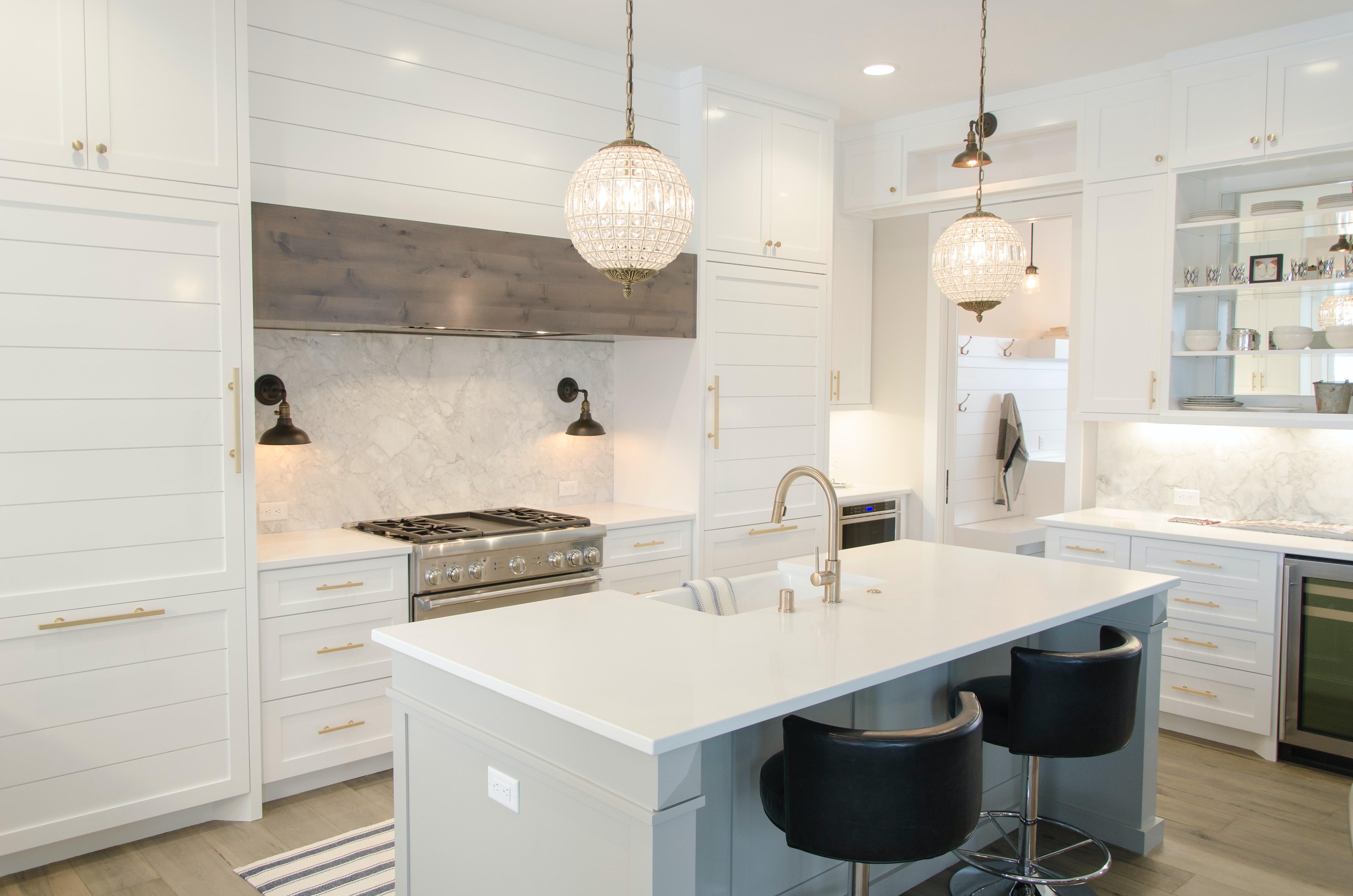
The true mark of a luxury home is an updated bathroom and kitchen. In fact, most home buyers pay particular attention to how well the bathroom and kitchen show. Most people like to show off their kitchen to their guest and prefer their bathroom to be comfortable and well decorated. This article will provide you with some essential tips on kitchen and bathroom renovation.
In the past both of these rooms were overlooked. Homeowners preferred a simple design so that the above mentioned rooms could only be used for their intended purpose. However, now days the kitchen is a social circle where family members enjoy dinning and socializing with one another. Likewise bathrooms have grown to be a place where homeowners like to relax and be comfortable. Let’s look at how you should approach these home improvement tasks
First take a measurement of your bathroom and kitchen to find out how much space you have. This will enable you to know how much you can add. The key is to figure out what you want to do so you plan it right. Do you want to increase your bathroom cabinets or just replace the outdated cabinets and sink? Do you want to perform a facelift or a major renovation consisting of moving walls and plumbing? Will it fit your budget? Knowing what you want will make it easier to achieve your goals.
If you need some renovation ideas you can read our section about bathroom renovation ideas and kitchen renovation ideas as well as looking through various home magazines to get an idea of the styles that are available and which in particular appeals to you. Home improvement is an art but one that you can learn and emulate from the many successfully renovated kitchens and bathrooms.
You need to honestly judge what you can do on your own and what you need to hand off to a professional. Can you install a kitchen countertop or replace the plumbing, etc. There are definitely task that any homeowner can do without any handyman skills such as painting or hanging mirrors, and replacing towel hangers. If you are installing a laminate countertop for your kitchen, you could learn the skill by watching training videos online or attending a free session such as those offered by Home Depot and Lowes.
If your bathroom renovation consists of replacing your existing sinks and cabinets without the need to relocate your plumbing, you could save yourself lots of money by learning how to do it yourself as mentioned above. Kitchen renovation and bathroom remodeling are expensive but you could save a bundle by doing some of the task yourself.
A smart idea would be to involve your entire family members in this project. Doing so not only make the project progress faster but also allows the family to have fun and spend quality time improving the home you all love and live in. This will increase family bond and give other a way of expressing their renovation ideas.
If you have unwanted items and you don’t know how to get rid of them, try the dumpster rental service at our website.
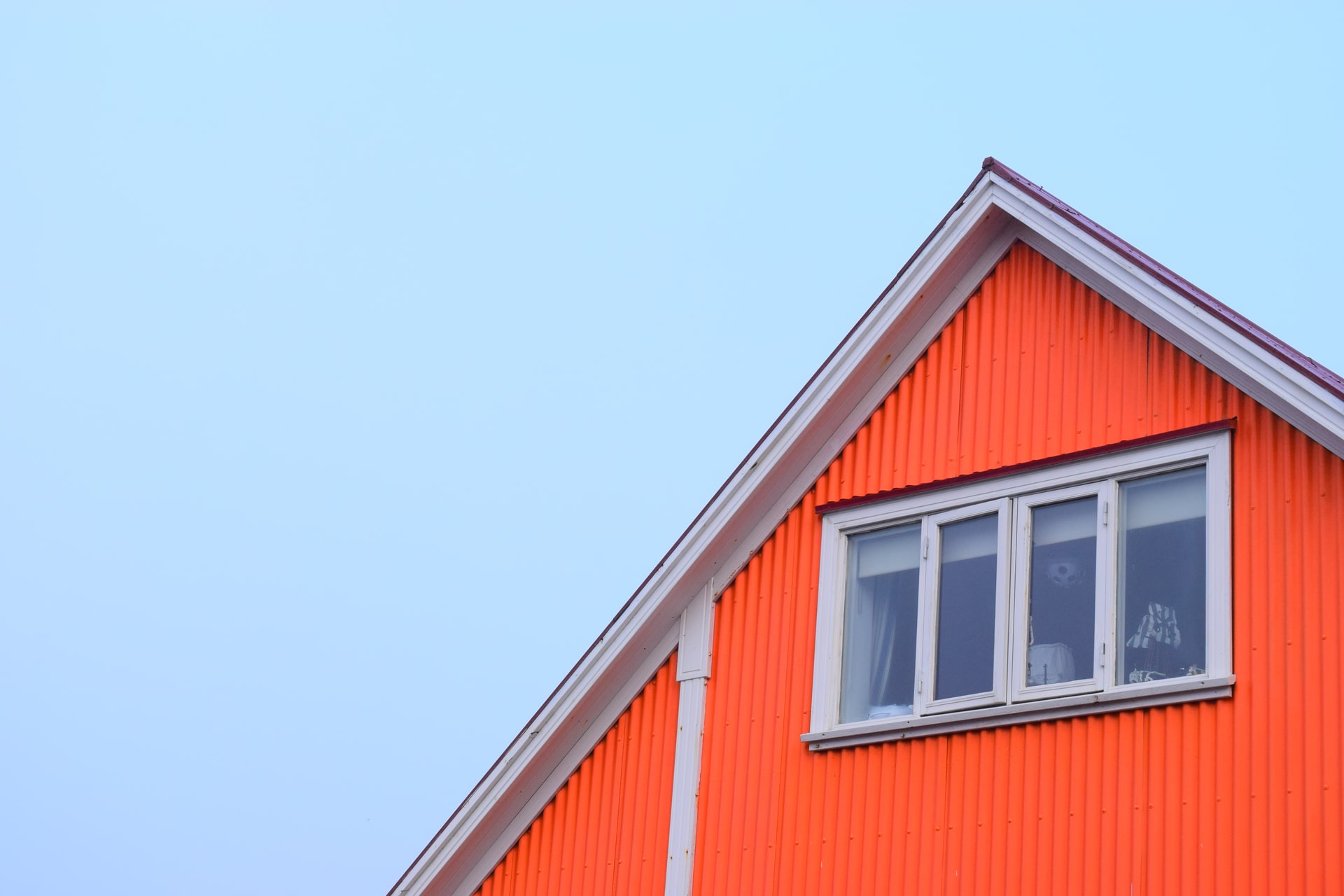
'Downsizing your home' is the process of reducing your overheads by moving into a smaller or cheaper property.
There may come a time when you consider downsizing your family home. Whether your children have flown the nest or you are simply looking at reducing your cost of living, there are numerous opportunities to consolidate living space and make the transition of downsizing much easier.
This is the best way to ensure you take only necessary everyday items to your new, smaller home. Common sense suggests you will not be able to fit all your worldly goods into a smaller home and therefore you should highlight the items you may consider selling or find new homes for via family and friends.
The best way to appreciate the size of the rooms in your new home is to use a room in your current house with similar dimensions to test room layouts with your furniture. This may be a reality check but it is also the best way to fully appreciate the amount of items that will be left unused following any house removals – giving you more time to prepare storage or to sell them on. If you are in any doubt, measure up!
If you are struggling to decide which items to get rid of it may be best to get an outside opinion from a friend or relative who will be able to provide an objective view on furniture or products that should be retained or sold on as they have no emotional attachment to your goods.
Whilst there is a great temptation to simply bin tired furnishings and products that you don’t wish to take to your new downsized home, you should always look to recycle your items if they have no sell-on value. Not only is this environmentally friendly, a trip to the landfill and recycle site will instantly take a weight off your mind.
Moving home is very much an exciting event but it can also be very stressful if things don’t go to plan. Especially if you are downsizing your home it is important to remain positive throughout. Ensure you make room for necessary mementos for your new home and acquaint yourself with the surroundings and amenities of your home particularly if it is located in a new town or city.
At Dumpster Wagon, they are designed to work with your schedule and offer flexible delivery options for your remodeling needs, home clean out, and disposing of your construction debris.
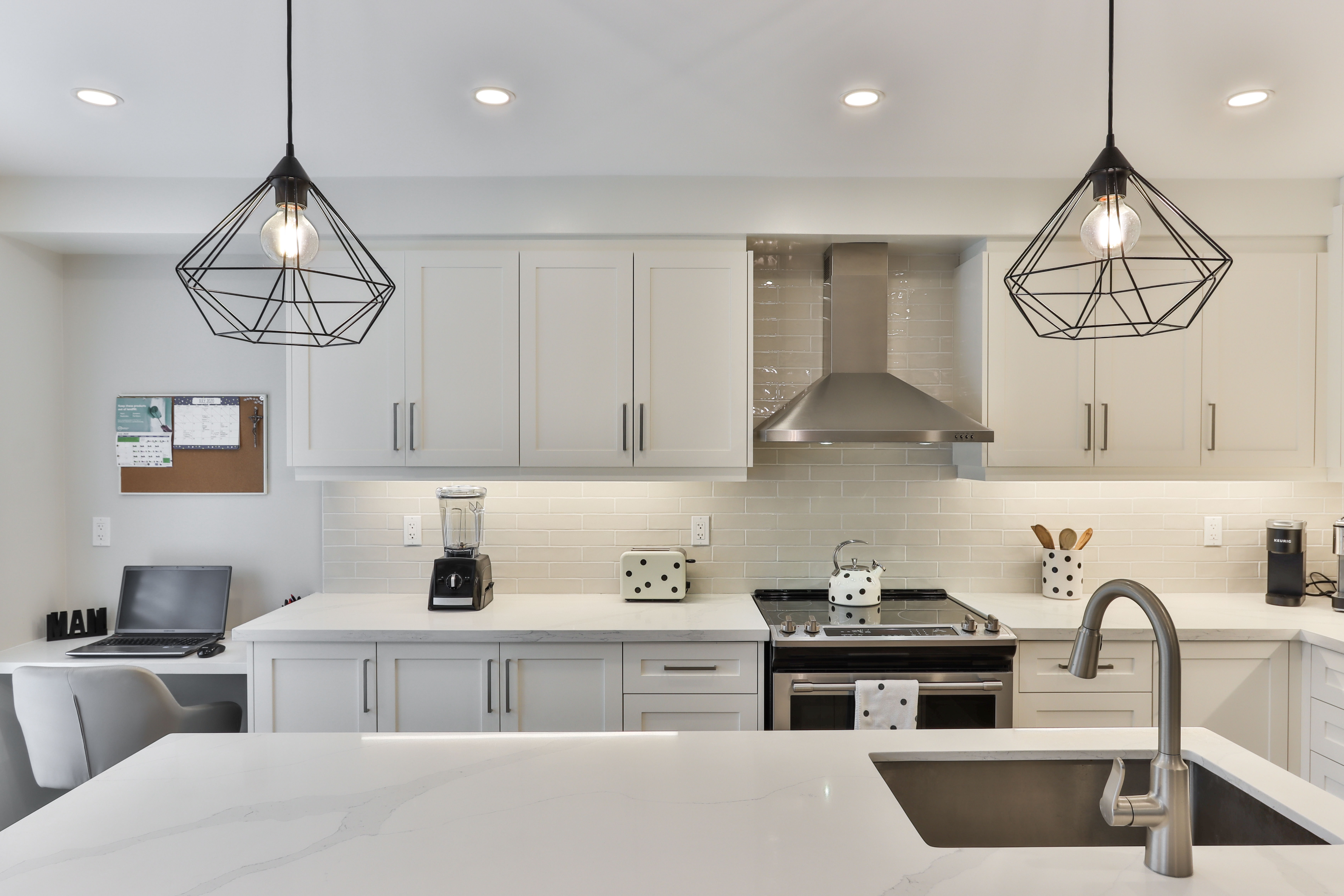
Cabinetry might be the most visible part of a kitchen, but countertops are the most essential. Without a place to rest a glass, prep a meal, or cool a pan, the kitchen would be incomplete and non-functional. Choosing the right countertop for your kitchen is not just about aesthetics, but also about function and daily use.
Because countertops take a lot of abuse from day-to-day use, choosing the right material is critical. Be honest with yourself about how hard you and your family are on your home and how much time you want to commit to maintenance. Think of it as matching the habits of you and your family with desired countertop materials. There is no perfect material but with a little research the right match can be made.
There are several countertop options on the market today. Laminate countertops are still the most affordable option and are virtually no-maintenance. The range of colors and patterns continues to grow every year, though it is prone to burns and can discolor at seams. Tile countertops come in second as the most affordable countertop option and custom designs can be made using one-of-a-kind tiles and coordinating colored grout. Tile can crack and chip, but can withstand high heat.
Natural stone such as granite, marble, and soapstone is extremely durable, but porous so routine sealing is required. Granite is the most durable of the natural stones and comes in a large assortment of patterns and colors. Marble should be reserved for backsplashes and specific areas since it can stain and burn. Soapstone, like granite, is highly durable and gives a cooling look with its deep grey color and matte finish.
Solid-surface countertops such as Corian and engineered stone countertops such as Silstone do not need sealing, but can burn and scratch. These can be molded to fit awkward angles. Both natural and solid-surface countertops are an expensive option, but have the longevity that the others do not. Concrete, with its endless color options and shapes, is less expensive than natural stone, but is also porous and requires the same maintenance.
Butcher block and stainless steel are not new to commercial kitchens, but are being used more and more in homes. Butcher block must be regularly cleaned and should be confined to a small work area, whereas stainless can beautifully match industrial-style appliances but can be very noisy if used too much.
If you are renovating your kitchen and have a waste that you want to get rid of, try our dumpster rental services at Dumpster Wagon.

Curtains are great inventions, they have dual purpose, they are great at adding to your décor, and the tone and demeanor of the room, but they also provide the benefit of blocking sunlight. Because of the purposes behind curtains, before choosing curtains for your home, you should first consider durability and ease of care. You will likely invest a pretty good sum of money in your curtains, so you want to make sure to choose your fabrics wisely.
When it comes to choosing curtains, fabric type is the number on thing to consider. There are two basic kinds of fibers:
There are two basic kinds of fibers: natural and synthetic. The most durable fibers in the natural category are: cotton, wool, linen and silk.
Cotton, wool, and linen are durable. Silk is delicate. Synthetic fibers include: acetate, polyester, nylon and rayon. All of these are quite durable and easy to clean. Polyester washes and drip dries very well, it doesn't show wrinkles and does well in direct sunlight. So, for your windows that get a lot of hot sunlight all day long, choosing curtains made of polyester is a good choice. Acrylic is wool-like to the touch, resists wrinkles, mildew, moths and fire. So, for older homes, this is a perfect curtain choice.
Acetate has good draping qualities and is soft to the touch. It is nice to know that acetate also is sun, moth and mildew resistant. It has excellent crease retention. Nylon is a very strong fabric and it pleats well. It is also wrinkle and sun resistant. Often times the synthetic fibered fabrics are your best choice for curtains.
When choosing curtains you start by picking a fabric type, but I unless you are a talented seamstress, you should buy your curtains and drapes from a professional. Generally you can find a good selection of fabrics, colors and patterns in ready made curtains that come in standard window sizes. However, they only come in standard sizes, so if you have an odd-size window, you're going to have to go custom. Standard sizes are 63" long by 48", 72", or 96" wide per pair. And 84" long by 48", 72", 96" 122" and 144" wide per pair.
Should you choose curtains with a lining? Well that depends. What does it depend on: personal taste and on fabric type. For example, if it is a sheer fabric, lining is usually not used. If you line a sheer, it is no longer sheer, which defeats the purpose. Lining helps most other fabrics, however. If you line it, the drapery will handle more smoothly and give more depth to the pleats. Also, lining a lighter fabric will help it hand straighter. Sun damage can be a killer to fabric, so a good lining will help protect your fabric from fading and sun rot.
Natural fabrics are more prone to rotting, so they should always be lined. Lining your fabric also helps conserve energy, as less energy will be lost through your windows. Last but not least, lining fabrics can help give the outside of your home a more uniform appearance. If all of your fabrics are lined with the same fabric, you can change the color and pattern of the fabrics you use from room to room without changing the color or look of your home from outside.
Choosing curtains should be fun. While you can have them custom made, if your windows are typical sizes, you will have plenty of choices at department stores, and won't need to get custom made curtains. Choosing curtains is personal, and there is no one way to determine what curtain will be right, so consider your climate, your personal taste, and the textures and richness you want in your home.
If you are looking to remodel your home, check out our dumpster rental services to help you out with all the waste when you proceed with your remodeling plans.
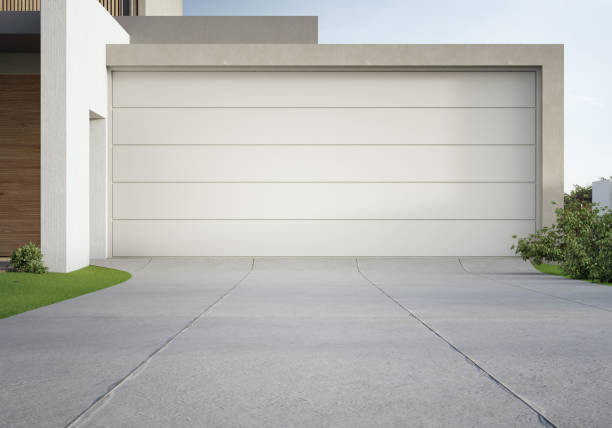
Driveways are primarily used to access homes. Apart from this very important function, they are also used to provide a safe playing haven for the kids, a basketball pitch for the teens as well as a lifestyle statement depending on the materials used in its construction. The cost of driveway paving depends on the materials used, the driveway size, labor required and its location.
Asphalt paving is the face behind that old and plain black look that characterizes American roads and which keeps this great nation rolling. According to the US Department of Transportation/ Federal Highway Administration (FHWA), the vast majority of roads in America and indeed the world over are made of asphalt. It therefore comes as no surprise that asphalt is a leading favorite in the paving of driveways. It is crack resistant due to its high levels of elasticity. This can be traced to oil, which is a major ingredient in its manufacture. Asphalt has a rather hot downside. Driveways paved using asphalt get incredible hot during the hot summer months due to its black color. Asphalt driveways also get brittle with time and need seal coating and semi-annual washing after every 2 to 4 years to maintain optimum elasticity levels. These driveways have a life expectancy of 10-30 years. Asphalt driveway cost range from $1 to $6 per square foot according to FHWA estimates.
Stone paving slabs present another option for driveway paving. Driveways made of stone are considered to be a bit rudimentary. This is because they require frequent maintenance since the stones are prone to moving. However, the stones are available in a variety of colors and sizes that makes them ideal for large driveway construction projects. The stones are supposed to be laid on a well-prepared gravel base and their depth should never exceed a depth of 4 inches. The use of stone in the paving of driveways is prohibited across most US cities due to its loose nature that provides a potential danger to children. Driveways having stone paving can mostly be spotted in rural US where the driveways are quite long such that it would be impractical to use asphalt or concrete. They need constant weed control and re-grading to get rid of loose chippings and stone. Despite their maintenance issues, stone driveways last for a lifetime and cost approximately $1 to $4 per square foot installed.
Brick and cobblestone pavers are the most expensive driveways in the US. This most expensive driveway paving style is accompanied by an intense labor demand. This is inline with the fact that labor and material are the two principal determinants of the cost of paving a driveway. The beauty, grace and elegance that characterize cobblestone and brick paved driveways come with an immense price tag. Each and every piece of cobblestone has to be set by hand a piece at a time. Laying a cobblestone paved driveway is akin to piecing together a huge 10,000 piece jigsaw puzzle. With each cobblestone piece weighing in at 10 lbs and costing approximately $5, paving driveway using brick and cobblestone is indeed pricey and energy sapping. Driveway paving using cobblestone and brick requires that you as the client have a good idea of the design pattern, color and product that you so desire before the contractor can start working on your driveway. They require annual weed control as well as a semi-annual sealing and washing program. The paving cost associated with the installation of this type of a driveway is typically $10 to $60 per square foot but is guaranteed to last a lifetime.
Stamped concrete is the fourth type of paving for driveways. Just like the brick and cobblestone driveways, this type of driveway is also available in numerous colors and styles. They are quick to install unlike the previous brick or paver driveways. They have an intriguing character and beauty that is well beyond what is offered by the standard stone paving and concrete installations. They have an extended life expectancy of almost 50 years and cost anywhere from $6 to $30 per square foot. They require expansion joints during the installation process that will allow for the control of cracks later on. Every now and then, they will require a driveway sealer just to keep them in top shape.
Concrete paved driveways present an extremely durable and cheap alternative provided that they do not crack within their first year of installation. In the Northern United States where the climate is characterised by frost, cracking presents a much more serious problem to these driveways than in the southern states where the climate is much warmer. Cracking in most concrete driveway paving is taken care of by the addition of a wire mesh or the addition of re-bar. The concrete should have a broom finish to prevent slipping when it rains. Plain concrete installations will cost $4 to $8 per square foot to install, while upgrading to a colored concrete will cost $6 to $25 to install.
Click here if you are looking for more tips about driveway.
|
|
Number of Consumers Who Visited This Site
Powered by counter.bloke.com |
Amladrrkidge Corp.
Copyright © 2002
Consumer Soundoff
All rights reserved.
Revised: October 25, 2002 ![]()
Make a commitment, and a better world. Sign the pledge for 2000: